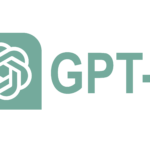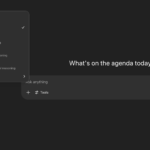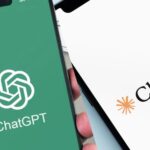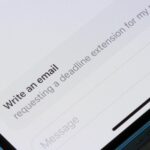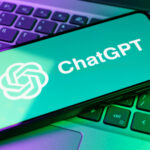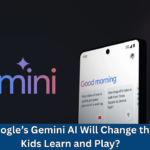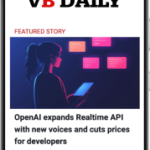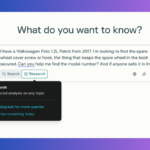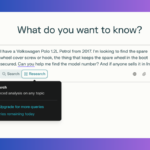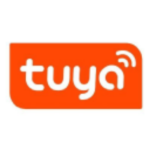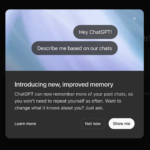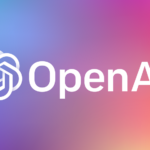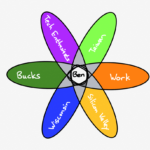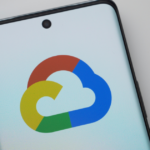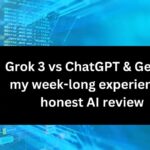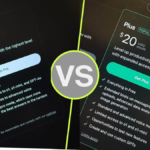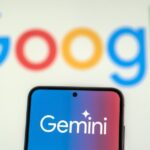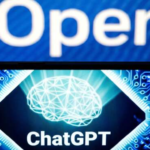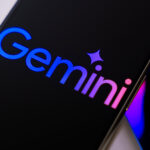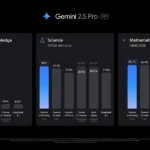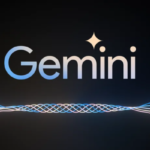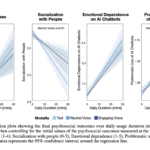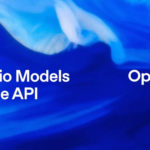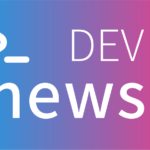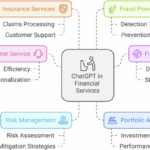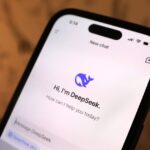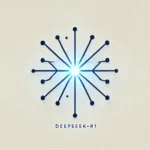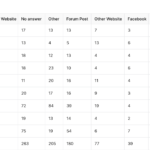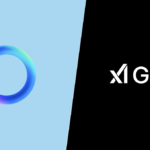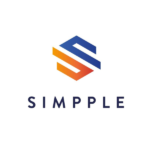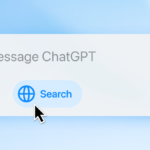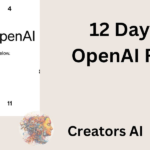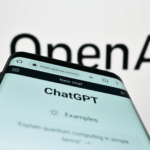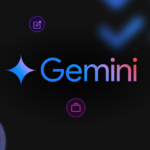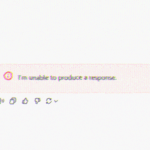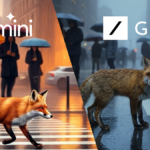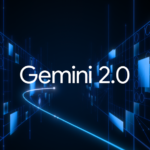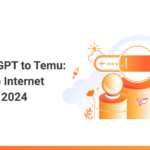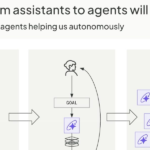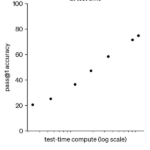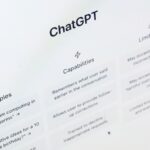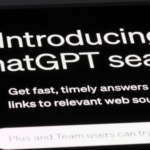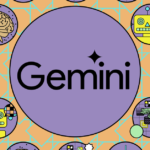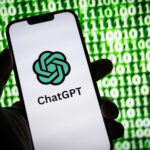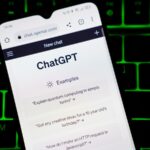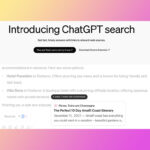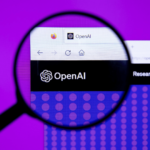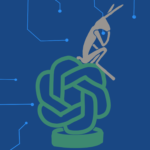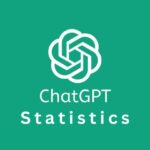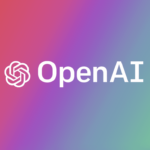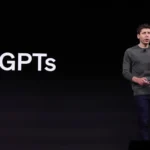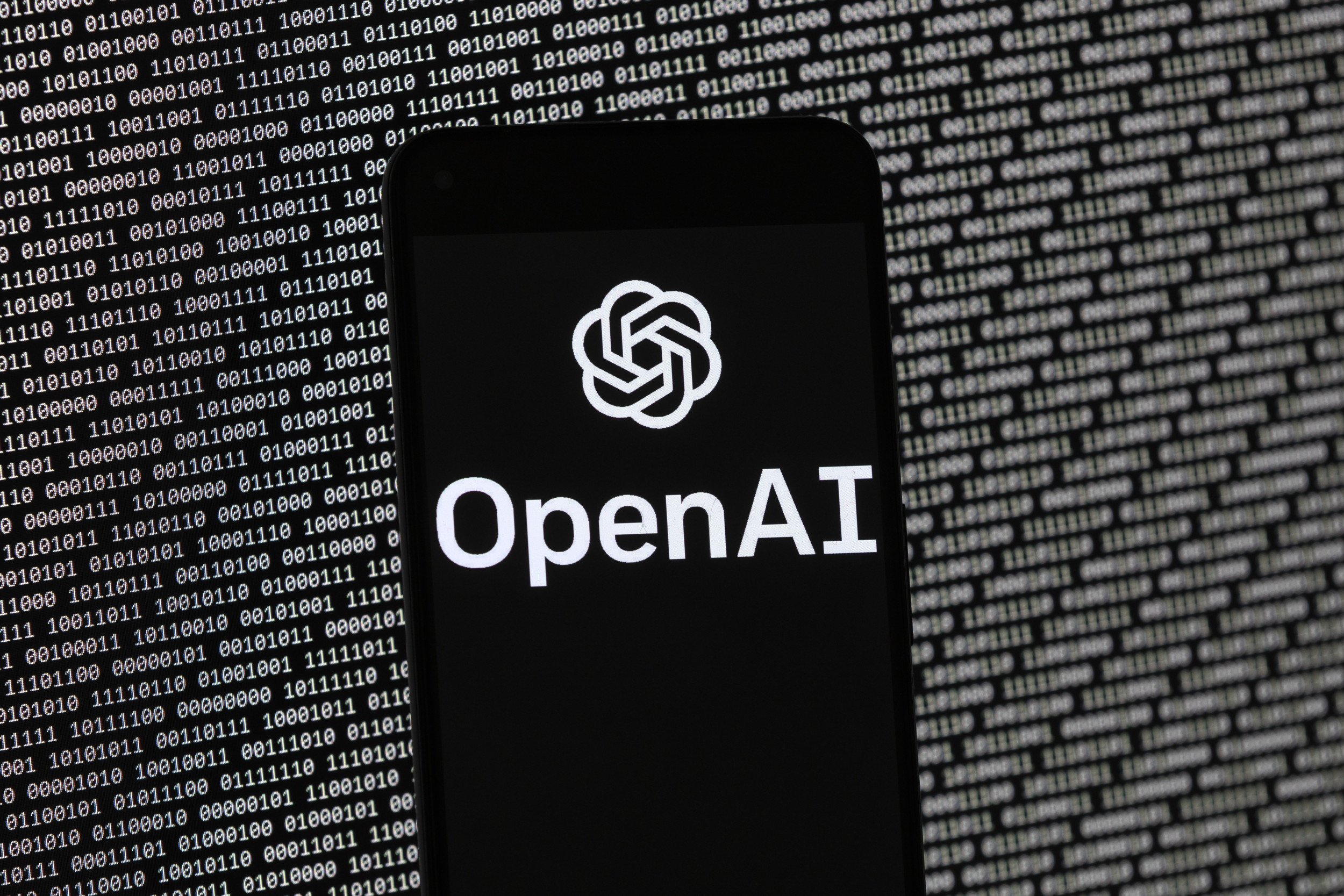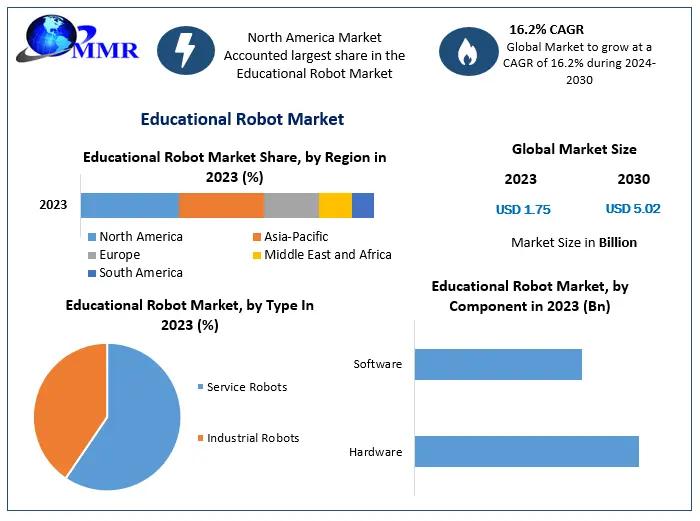Noticias
OpenAI proposes a new corporate structure
Published
11 meses agoon
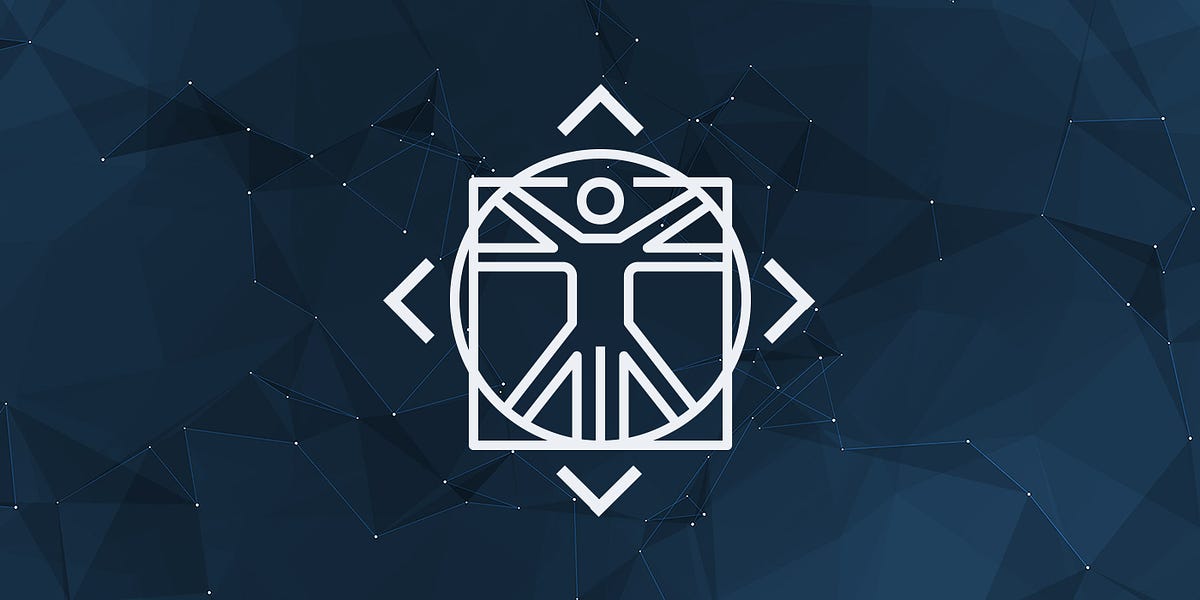
Hello and welcome to Sync #500!
First of all, Happy New Year! Secondly, this is the 500th issue of Sync. Such a milestone offers a chance to reflect on nearly 10 years of writing a weekly newsletter and to look ahead to the future, which I’ll be sharing with you soon in a separate post.
In this 500th issue, we’ll take a closer look at OpenAI’s proposed new corporate structure, the reactions it has sparked, and its potential impact on the tech world.
In other news, Nvidia is already eyeing the next big thing after AI—robotics. Meanwhile, Google CEO Sundar Pichai has urged employees to prepare for a transformative 2025. We also have a comparison between ChatGPT Search and Google Search, an overview of how AI performed in the recently concluded Advent of Code 2024, and an analysis of the state of AI hardware startups.
Over in robotics, Figure AI has shipped its first humanoid robots to a paying customer, and BYD has entered the humanoid robotics race.
We’ll conclude this week’s issue with a look at what to expect from mRNA vaccines in 2025 and with a company promising to bring underwater habitats—where people can live and work tens or hundreds of metres below the surface—a step closer to reality.
Enjoy!
The last three years have been a time of massive growth for OpenAI. The AI lab went from a startup known primarily within the tech and AI community into a poster child of the current AI boom.
However, such massive growth requires massive transformation. OpenAI is no longer the same company that released ChatGPT in November 2022 as an experiment. The company’s leadership has changed. Many key people, such as Mira Murati, former CTO, and Ilya Sutskever, co-founder and former chief scientist, left the company. Meanwhile, hundreds of new employees have joined, all contributing to a shift in the company’s culture and priorities.
Over the years, OpenAI has changed. Now, facing new challenges as a leader in the AI space valued at $157 billion, OpenAI proposes to change itself once again. However, OpenAI is going against some powerful forces that could prevent its plans from happening.
OpenAI began as a non-profit organisation, founded in 2015 with the goal of ensuring that artificial general intelligence (AGI) benefits all of humanity. However, OpenAI’s leadership realised that the nonprofit structure, which reflected the altruistic spirit and ideals behind its creation, was incompatible with the goal of building AGI.
The research and development of advanced AI models require an enormous amount of computing power—first to train the models and then even more to deploy them at scale to millions of users (OpenAI has 300 million weekly users). A non-profit organisation was not attractive to investors, who seek returns on their investments. Consequently, OpenAI began exploring ways to transform itself into a for-profit company.
Email conversations revealed by both Elon Musk’s legal team and OpenAI indicate that discussions about transforming OpenAI into a for-profit company began as early as 2017. In 2019, OpenAI announced a new corporate structure in which a for-profit entity (“OpenAI LP”) is controlled by a non-profit board, with capped profit-sharing for investors and employees. This rather unusual hybrid corporate structure represents a compromise between the harsh reality that a tech company needs to operate as a for-profit entity to attract investments and the nonprofit model that embodies OpenAI’s original spirit.
OpenAI’s turbulent early years – Sync #494
The capped-profit structure served OpenAI well. It made the company more attractive to investors, who poured over $20 billion into it, including half of that amount secured in October 2024 ($6.6 billion from a Series B funding round and $4 billion borrowed from banks). This approach paved the way for ChatGPT and the current AI boom we are experiencing today.
However, those billions raised for building AGI are not enough. Reports published in the summer of 2024 revealed that OpenAI was on track to lose approximately $5 billion that year. The investments needed for the research and development of new models, as well as securing the computing power required to train and deploy them—whether through renting or building dedicated data centres—will demand even more resources and many more billions of dollars.
To address these challenges and position itself for a successful future, OpenAI plans to once again change its corporate structure.
OpenAI has announced its intention to transition its for-profit arm into a Delaware Public Benefit Corporation (PBC) by 2025. “As we enter 2025, we will have to become more than a lab and a startup — we have to become an enduring company,” states OpenAI.
According to OpenAI, the PBC model is the solution to balancing shareholder interests, stakeholder priorities, and public benefits in its decision-making, potentially offering a middle ground between traditional for-profit goals and its founding mission.
Unlike traditional for-profit companies, which are solely focused on maximizing shareholder value, PBCs are legally required to balance profit-making with its stated public benefit. For OpenAI, this means ensuring that its mission of advancing AI to benefit all humanity remains central to its operations, even as it raises capital and grows its business.
The for-profit entity will adopt a PBC structure, allowing OpenAI to raise capital with conventional equity terms while maintaining a commitment to public benefit. The non-profit will retain significant equity in the PBC, providing it with substantial resources to fund charitable initiatives in sectors like health care, education, and science. The non-profit’s influence will shift away from controlling the for-profit to focusing on its charitable initiatives and ensuring that OpenAI’s mission of benefiting humanity remains central.
OpenAI plans, however, have been met with criticism and opposition.
Critics argue that OpenAI’s new corporate structure will prioritise investors and revenue over the company’s original mission of building AIG that benefits all of humanity. Others raised concerns that the transition could exploit non-profit tax benefits while operating as a for-profit entity.
The strongest opposition to OpenAI’s plans comes from Elon Musk. Musk, one of OpenAI’s founders and a significant financial supporter in its early days, left the organisation in 2018 due to differences in visions for its direction and priorities. Since the release and subsequent success of ChatGPT, Musk has become a vocal critic of OpenAI.
In March 2024, Musk filed a lawsuit against OpenAI and its leadership, claiming that the organisation has strayed from its original non-profit mission of advancing AI for public benefit by prioritising profit through its collaboration with Microsoft. Musk argues that this shift undermines OpenAI’s commitment to open-source development and public welfare. The lawsuit seeks to realign OpenAI with its founding principles—a move which, if successful, would effectively end OpenAI as we know it today and dramatically limit its funding options.
Although Musk calls in the lawsuit for OpenAI to return to its non-profit roots, it is worth noting that he is also an owner of xAI, a competitor to OpenAI, which complicates his position. Reducing OpenAI’s market presence would undoubtedly benefit xAI.
Other competitors also see an opportunity to curb OpenAI’s growth and influence in the AI industry. Meta has aligned with Musk, sending a letter to California Attorney General Rob Bonta and arguing that allowing the shift would have “seismic implications for Silicon Valley.” Meanwhile, Google has reportedly urged the US Federal Trade Commission to end OpenAI’s partnership with Microsoft, claiming the deal is “preventing them from competing in the burgeoning artificial intelligence market.”
No matter what happens with OpenAI’s restructuring plans, the impact on the tech industry and future startup founders will be profound.
OpenAI’s internal conflict between staying true to its ideals and navigating the realities of the modern business environment highlights that the romantic vision of a group of world-class researchers and engineers changing the world through a breakthrough invention alone is just that—a romantic vision. It demonstrates that achieving world-changing breakthroughs like AGI requires not only technological expertise but also substantial financial investments.
As one of the leading AI companies, OpenAI’s restructuring could set a precedent for how mission-driven organisations adapt to the demands of a competitive and capital-intensive market. It also raises important questions about how such transformative technologies should be governed and who should benefit from them.
If you enjoy this post, please click the ❤️ button or share it.
Share
Do you like my work? Consider becoming a paying subscriber to support it
Become a paid subscriber
For those who prefer to make a one-off donation, you can ‘buy me a coffee’ via Ko-fi. Every coffee bought is a generous support towards the work put into this newsletter.
Your support, in any form, is deeply appreciated and goes a long way in keeping this newsletter alive and thriving.
▶️ Eva’s First Steps Out of the Lab (6:25)
In this video, engineers and researchers from IHMC, a legendary name in robotics research and development space, share the first steps outside the lab of Eva, their robotic exoskeleton designed for people working in hazardous environments that require wearing heavy protective equipment. The walk outside the lab includes taking the first steps up and down stairs, as well as venturing outside the building, all accompanied by commentary from the person wearing the exoskeleton.
▶️ Predictions for Technology, Civilization & Our Future (38:08)
It’s that time of year when predictions for 2025 and beyond abound. Isaac Arthur envisions an optimistic near future, where advancements in AI and robotics enhance daily life, life extension technologies help us live healthier and longer, and humanity takes its first significant steps toward colonizing the solar system. These innovations could bring profound societal changes, new discoveries, and unparalleled opportunities. Arthur also explores the challenges of predicting the future, emphasizing the importance of adaptability, informed decision-making, and shaping the future through deliberate action.
Google CEO Pichai tells employees to gear up for big 2025: ‘The stakes are high’
The last two years have not been good for Google. The tech giant was caught off guard by the sudden rise of OpenAI and is now trying to regain its position as the leader in AI. Additionally, the company faces increased competition and regulatory hurdles. Amidst these challenges, Google CEO Sundar Pichai recently told employees that “the stakes are high” for 2025, emphasising the need for urgency and faster execution. Pichai also highlighted the importance of staying “scrappy,” citing Google’s early days as an example of innovation under constraints. The focus will be on leveraging advancements in AI (with Gemini playing a key role here) to address user problems and scale new technologies.
DeepSeek-V3, ultra-large open-source AI, outperforms Llama and Qwen on launch
Chinese AI startup DeepSeek released their new ultra-large model, DeepSeek-V3. According to the benchmarks provided by DeepSeek, this 671B parameters model is the strongest open model available and, in some benchmarks, outperforms GPT-4o and Claude 3.5 Sonnet.
Israel built an ‘AI factory’ for war. It unleashed it in Gaza.
The conflict in Gaza marks one of the first major uses of AI in warfare. The Israel Defense Forces (IDF) deploy advanced tools like “Habsora” and “Lavender” to analyze intelligence and suggest targets, significantly speeding up operations. While these tools enhance efficiency, internal audits and critiques have highlighted flaws such as language processing inaccuracies, over-reliance on algorithmic recommendations, and a lack of transparency in distinguishing between AI-derived and human-sourced intelligence. Critics argue this automation has lowered thresholds for collateral damage, raising civilian death tolls. The shift to AI-centric operations has also sparked debates within the IDF, with concerns about the erosion of traditional intelligence practices and compromised decision-making integrity. These challenges underline the ethical and operational dilemmas posed by the use of AI in modern warfare.
Tenstorrent and the State of AI Hardware Startups
Here is an excellent (and entertaining) analysis of Tenstorrent and why, according to
, Tenstorrent is one of the few AI hardware startups that makes sense. The piece explains in detail what Tenstorrent brings to the table and why they are probably the only AI hardware startup capable of breaking Nvidia’s and semi-custom (Google TPU, Amazon Trainium, Microsoft Maia) silicon moats. The post also contains a good analysis of the AI hardware startup ecosystem.
Performance of LLMs on Advent of code 2024
Over December, thousands of programmers were solving Advent of Code—an annual Christmas-themed series of coding challenges. Many used this as an opportunity to build their own coding agents and see how good they are at solving sometimes very challenging algorithmic problems. This post shares the results of one such experiment, which used GPT-4o, Gemini 1.5 Pro and Claude 3.5 Sonnet.
ChatGPT search vs. Google: A deep dive analysis of 62 queries
How does ChatGPT Search compare to Google Search? Here is a deep dive analysis comparing both search engines across 62 queries in various categories. The conclusion of this analysis is that Google Search remains the better solution for most searches, with ChatGPT Search being surprisingly competitive when it comes to informational queries.
If you’re enjoying the insights and perspectives shared in the Humanity Redefined newsletter, why not spread the word?
Refer a friend
Nvidia’s next move: Powering humanoid robots
After conquering AI, Nvidia is focusing on the next big thing: robotics. Nvidia aims to be an OEM supplier, supporting the global community of robot makers rather than competing directly with manufacturers such as Tesla. The company took steps towards this goal in 2024 and it looks like to double down on this approach in 2025 with the launch of a new generation of compact computers for humanoid robots, called Jetson Thor, in the first half of the year.
Figure AI ships Figure 02 humanoid robots to a paying customer
Brett Adcock, the CEO of Figure AI, shared on LinkedIn that the robotics startup has become revenue-generating and has delivered its Figure 02 humanoid robots to an undisclosed commercial client. Figure AI emerged from stealth in January 2023 and has rapidly developed, iterated, and tested humanoid robots. In 2023, the company raised $70 million in Series A funding and later secured a $675 million Series B round in 2024, with OpenAI among its investors.
BYD officially enters humanoid robot race as global talent search kicks off
A new player is entering the already crowded humanoid robotics scene. BYD, a leading Chinese EV maker, is joining the field of humanoid robots. Aside from announcing a global recruitment programme to attract top talent, targeting master’s and doctoral graduates from 2024–2025, details about BYD’s humanoid robot remain sparse.
Saudi Arabia invests in robots to help build its Neom desert megacity
Saudi Arabia is currently in the midst of several ambitious construction projects, including the Line megacity and the twin skyscrapers Epicon. The recently secured bid to host the FIFA World Cup 2034 is only set to fuel the country’s construction boom further. To tackle the massive projects ahead, Saudi Arabia is turning to robotics to help speed up construction and has made a significant investment in Europe’s GMT Robotics through Neom’s strategic investment arm, the Neom Investment Fund (NIF).
The future of mRNA: companies and trials to watch in 2025
The Covid-19 vaccines have propelled mRNA vaccines into the spotlight. This article explores what can we expect from mRNA vaccines in 2025. Companies like Moderna and BioNTech are focusing on personalized cancer vaccines and HIV treatments, while Pfizer is leveraging its infrastructure for flu, shingles, and rare disease therapies. Other players, such as CureVac and Arcturus, are exploring second-generation mRNA technologies and novel delivery methods.
Genetically edited mosquitoes haven’t scaled yet. Why?
Mosquitoes are among the deadliest organisms, responsible for spreading diseases such as malaria, dengue fever, and the Zika virus. In this post,
explains the concept of gene drives—a method of genetically modifying mosquitoes to either suppress their populations or introduce anti-pathogenic genes, potentially eliminating their ability to transmit deadly diseases. While gene drives hold significant promise, the article provides an overview of their mechanisms and highlights the technical challenges (e.g., resistance development and species-specific variability), ecological risks, and ethical concerns tied to their deployment.
In 2025, People Will Try Living in This Underwater Habitat
Science fiction is full of underwater habitats where people live and work tens or hundreds of metres below the surface. British startup Deep is on a mission to make that futuristic vision a reality, with the first step being the launch of Vanguard, a rapidly deployable, expedition-style underwater habitat the size of a shipping container, capable of housing three people at depths of about 100 metres. Testing is scheduled to begin in the first quarter of 2025. The startup then plans to launch Sentinel, a permanent modular habitat system, in 2027. Deep hopes that its permanent underwater habitats will benefit marine science and drive advancements in marine engineering and advanced manufacturing techniques.
Thanks for reading. If you enjoyed this post, please click the ❤️ button or share it.
Share
Humanity Redefined sheds light on the bleeding edge of technology and how advancements in AI, robotics, and biotech can usher in abundance, expand humanity’s horizons, and redefine what it means to be human.
A big thank you to my paid subscribers, to my Patrons: whmr, Florian, dux, Eric, Preppikoma and Andrew, and to everyone who supports my work on Ko-Fi. Thank you for the support!
My DMs are open to all subscribers. Feel free to drop me a message, share feedback, or just say “hi!”
You may like
Noticias
Revivir el compromiso en el aula de español: un desafío musical con chatgpt – enfoque de la facultad
Published
6 meses agoon
6 junio, 2025
A mitad del semestre, no es raro notar un cambio en los niveles de energía de sus alumnos (Baghurst y Kelley, 2013; Kumari et al., 2021). El entusiasmo inicial por aprender un idioma extranjero puede disminuir a medida que otros cursos con tareas exigentes compitan por su atención. Algunos estudiantes priorizan las materias que perciben como más directamente vinculadas a su especialidad o carrera, mientras que otros simplemente sienten el peso del agotamiento de mediados de semestre. En la primavera, los largos meses de invierno pueden aumentar esta fatiga, lo que hace que sea aún más difícil mantener a los estudiantes comprometidos (Rohan y Sigmon, 2000).
Este es el momento en que un instructor de idiomas debe pivotar, cambiando la dinámica del aula para reavivar la curiosidad y la motivación. Aunque los instructores se esfuerzan por incorporar actividades que se adapten a los cinco estilos de aprendizaje preferidos (Felder y Henriques, 1995)-Visual (aprendizaje a través de imágenes y comprensión espacial), auditivo (aprendizaje a través de la escucha y discusión), lectura/escritura (aprendizaje a través de interacción basada en texto), Kinesthetic (aprendizaje a través de movimiento y actividades prácticas) y multimodal (una combinación de múltiples estilos)-its is beneficiales). Estructurado y, después de un tiempo, clases predecibles con actividades que rompen el molde. La introducción de algo inesperado y diferente de la dinámica del aula establecida puede revitalizar a los estudiantes, fomentar la creatividad y mejorar su entusiasmo por el aprendizaje.
La música, en particular, ha sido durante mucho tiempo un aliado de instructores que enseñan un segundo idioma (L2), un idioma aprendido después de la lengua nativa, especialmente desde que el campo hizo la transición hacia un enfoque más comunicativo. Arraigado en la interacción y la aplicación del mundo real, el enfoque comunicativo prioriza el compromiso significativo sobre la memorización de memoria, ayudando a los estudiantes a desarrollar fluidez de formas naturales e inmersivas. La investigación ha destacado constantemente los beneficios de la música en la adquisición de L2, desde mejorar la pronunciación y las habilidades de escucha hasta mejorar la retención de vocabulario y la comprensión cultural (DeGrave, 2019; Kumar et al. 2022; Nuessel y Marshall, 2008; Vidal y Nordgren, 2024).
Sobre la base de esta tradición, la actividad que compartiremos aquí no solo incorpora música sino que también integra inteligencia artificial, agregando una nueva capa de compromiso y pensamiento crítico. Al usar la IA como herramienta en el proceso de aprendizaje, los estudiantes no solo se familiarizan con sus capacidades, sino que también desarrollan la capacidad de evaluar críticamente el contenido que genera. Este enfoque los alienta a reflexionar sobre el lenguaje, el significado y la interpretación mientras participan en el análisis de texto, la escritura creativa, la oratoria y la gamificación, todo dentro de un marco interactivo y culturalmente rico.
Descripción de la actividad: Desafío musical con Chatgpt: “Canta y descubre”
Objetivo:
Los estudiantes mejorarán su comprensión auditiva y su producción escrita en español analizando y recreando letras de canciones con la ayuda de ChatGPT. Si bien las instrucciones se presentan aquí en inglés, la actividad debe realizarse en el idioma de destino, ya sea que se enseñe el español u otro idioma.
Instrucciones:
1. Escuche y decodifique
- Divida la clase en grupos de 2-3 estudiantes.
- Elija una canción en español (por ejemplo, La Llorona por chavela vargas, Oye CÓMO VA por Tito Puente, Vivir mi Vida por Marc Anthony).
- Proporcione a cada grupo una versión incompleta de la letra con palabras faltantes.
- Los estudiantes escuchan la canción y completan los espacios en blanco.
2. Interpretar y discutir
- Dentro de sus grupos, los estudiantes analizan el significado de la canción.
- Discuten lo que creen que transmiten las letras, incluidas las emociones, los temas y cualquier referencia cultural que reconocan.
- Cada grupo comparte su interpretación con la clase.
- ¿Qué crees que la canción está tratando de comunicarse?
- ¿Qué emociones o sentimientos evocan las letras para ti?
- ¿Puedes identificar alguna referencia cultural en la canción? ¿Cómo dan forma a su significado?
- ¿Cómo influye la música (melodía, ritmo, etc.) en su interpretación de la letra?
- Cada grupo comparte su interpretación con la clase.
3. Comparar con chatgpt
- Después de formar su propio análisis, los estudiantes preguntan a Chatgpt:
- ¿Qué crees que la canción está tratando de comunicarse?
- ¿Qué emociones o sentimientos evocan las letras para ti?
- Comparan la interpretación de ChatGPT con sus propias ideas y discuten similitudes o diferencias.
4. Crea tu propio verso
- Cada grupo escribe un nuevo verso que coincide con el estilo y el ritmo de la canción.
- Pueden pedirle ayuda a ChatGPT: “Ayúdanos a escribir un nuevo verso para esta canción con el mismo estilo”.
5. Realizar y cantar
- Cada grupo presenta su nuevo verso a la clase.
- Si se sienten cómodos, pueden cantarlo usando la melodía original.
- Es beneficioso que el profesor tenga una versión de karaoke (instrumental) de la canción disponible para que las letras de los estudiantes se puedan escuchar claramente.
- Mostrar las nuevas letras en un monitor o proyector permite que otros estudiantes sigan y canten juntos, mejorando la experiencia colectiva.
6. Elección – El Grammy va a
Los estudiantes votan por diferentes categorías, incluyendo:
- Mejor adaptación
- Mejor reflexión
- Mejor rendimiento
- Mejor actitud
- Mejor colaboración
7. Reflexión final
- ¿Cuál fue la parte más desafiante de comprender la letra?
- ¿Cómo ayudó ChatGPT a interpretar la canción?
- ¿Qué nuevas palabras o expresiones aprendiste?
Pensamientos finales: música, IA y pensamiento crítico
Un desafío musical con Chatgpt: “Canta y descubre” (Desafío Musical Con Chatgpt: “Cantar y Descubrir”) es una actividad que he encontrado que es especialmente efectiva en mis cursos intermedios y avanzados. Lo uso cuando los estudiantes se sienten abrumados o distraídos, a menudo alrededor de los exámenes parciales, como una forma de ayudarlos a relajarse y reconectarse con el material. Sirve como un descanso refrescante, lo que permite a los estudiantes alejarse del estrés de las tareas y reenfocarse de una manera divertida e interactiva. Al incorporar música, creatividad y tecnología, mantenemos a los estudiantes presentes en la clase, incluso cuando todo lo demás parece exigir su atención.
Más allá de ofrecer una pausa bien merecida, esta actividad provoca discusiones atractivas sobre la interpretación del lenguaje, el contexto cultural y el papel de la IA en la educación. A medida que los estudiantes comparan sus propias interpretaciones de las letras de las canciones con las generadas por ChatGPT, comienzan a reconocer tanto el valor como las limitaciones de la IA. Estas ideas fomentan el pensamiento crítico, ayudándoles a desarrollar un enfoque más maduro de la tecnología y su impacto en su aprendizaje.
Agregar el elemento de karaoke mejora aún más la experiencia, dando a los estudiantes la oportunidad de realizar sus nuevos versos y divertirse mientras practica sus habilidades lingüísticas. Mostrar la letra en una pantalla hace que la actividad sea más inclusiva, lo que permite a todos seguirlo. Para hacerlo aún más agradable, seleccionando canciones que resuenen con los gustos de los estudiantes, ya sea un clásico como La Llorona O un éxito contemporáneo de artistas como Bad Bunny, Selena, Daddy Yankee o Karol G, hace que la actividad se sienta más personal y atractiva.
Esta actividad no se limita solo al aula. Es una gran adición a los clubes españoles o eventos especiales, donde los estudiantes pueden unirse a un amor compartido por la música mientras practican sus habilidades lingüísticas. Después de todo, ¿quién no disfruta de una buena parodia de su canción favorita?
Mezclar el aprendizaje de idiomas con música y tecnología, Desafío Musical Con Chatgpt Crea un entorno dinámico e interactivo que revitaliza a los estudiantes y profundiza su conexión con el lenguaje y el papel evolutivo de la IA. Convierte los momentos de agotamiento en oportunidades de creatividad, exploración cultural y entusiasmo renovado por el aprendizaje.
Angela Rodríguez Mooney, PhD, es profesora asistente de español y la Universidad de Mujeres de Texas.
Referencias
Baghurst, Timothy y Betty C. Kelley. “Un examen del estrés en los estudiantes universitarios en el transcurso de un semestre”. Práctica de promoción de la salud 15, no. 3 (2014): 438-447.
DeGrave, Pauline. “Música en el aula de idiomas extranjeros: cómo y por qué”. Revista de Enseñanza e Investigación de Lenguas 10, no. 3 (2019): 412-420.
Felder, Richard M. y Eunice R. Henriques. “Estilos de aprendizaje y enseñanza en la educación extranjera y de segundo idioma”. Anales de idiomas extranjeros 28, no. 1 (1995): 21-31.
Nuessel, Frank y April D. Marshall. “Prácticas y principios para involucrar a los tres modos comunicativos en español a través de canciones y música”. Hispania (2008): 139-146.
Kumar, Tribhuwan, Shamim Akhter, Mehrunnisa M. Yunus y Atefeh Shamsy. “Uso de la música y las canciones como herramientas pedagógicas en la enseñanza del inglés como contextos de idiomas extranjeros”. Education Research International 2022, no. 1 (2022): 1-9
Noticias
5 indicaciones de chatgpt que pueden ayudar a los adolescentes a lanzar una startup
Published
6 meses agoon
5 junio, 2025

Teen emprendedor que usa chatgpt para ayudarlo con su negocio
El emprendimiento adolescente sigue en aumento. Según Junior Achievement Research, el 66% de los adolescentes estadounidenses de entre 13 y 17 años dicen que es probable que considere comenzar un negocio como adultos, con el monitor de emprendimiento global 2023-2024 que encuentra que el 24% de los jóvenes de 18 a 24 años son actualmente empresarios. Estos jóvenes fundadores no son solo soñando, están construyendo empresas reales que generan ingresos y crean un impacto social, y están utilizando las indicaciones de ChatGPT para ayudarlos.
En Wit (lo que sea necesario), la organización que fundó en 2009, hemos trabajado con más de 10,000 jóvenes empresarios. Durante el año pasado, he observado un cambio en cómo los adolescentes abordan la planificación comercial. Con nuestra orientación, están utilizando herramientas de IA como ChatGPT, no como atajos, sino como socios de pensamiento estratégico para aclarar ideas, probar conceptos y acelerar la ejecución.
Los emprendedores adolescentes más exitosos han descubierto indicaciones específicas que los ayudan a pasar de una idea a otra. Estas no son sesiones genéricas de lluvia de ideas: están utilizando preguntas específicas que abordan los desafíos únicos que enfrentan los jóvenes fundadores: recursos limitados, compromisos escolares y la necesidad de demostrar sus conceptos rápidamente.
Aquí hay cinco indicaciones de ChatGPT que ayudan constantemente a los emprendedores adolescentes a construir negocios que importan.
1. El problema del primer descubrimiento chatgpt aviso
“Me doy cuenta de que [specific group of people]
luchar contra [specific problem I’ve observed]. Ayúdame a entender mejor este problema explicando: 1) por qué existe este problema, 2) qué soluciones existen actualmente y por qué son insuficientes, 3) cuánto las personas podrían pagar para resolver esto, y 4) tres formas específicas en que podría probar si este es un problema real que vale la pena resolver “.
Un adolescente podría usar este aviso después de notar que los estudiantes en la escuela luchan por pagar el almuerzo. En lugar de asumir que entienden el alcance completo, podrían pedirle a ChatGPT que investigue la deuda del almuerzo escolar como un problema sistémico. Esta investigación puede llevarlos a crear un negocio basado en productos donde los ingresos ayuden a pagar la deuda del almuerzo, lo que combina ganancias con el propósito.
Los adolescentes notan problemas de manera diferente a los adultos porque experimentan frustraciones únicas, desde los desafíos de las organizaciones escolares hasta las redes sociales hasta las preocupaciones ambientales. Según la investigación de Square sobre empresarios de la Generación de la Generación Z, el 84% planea ser dueños de negocios dentro de cinco años, lo que los convierte en candidatos ideales para las empresas de resolución de problemas.
2. El aviso de chatgpt de chatgpt de chatgpt de realidad de la realidad del recurso
“Soy [age] años con aproximadamente [dollar amount] invertir y [number] Horas por semana disponibles entre la escuela y otros compromisos. Según estas limitaciones, ¿cuáles son tres modelos de negocio que podría lanzar de manera realista este verano? Para cada opción, incluya costos de inicio, requisitos de tiempo y los primeros tres pasos para comenzar “.
Este aviso se dirige al elefante en la sala: la mayoría de los empresarios adolescentes tienen dinero y tiempo limitados. Cuando un empresario de 16 años emplea este enfoque para evaluar un concepto de negocio de tarjetas de felicitación, puede descubrir que pueden comenzar con $ 200 y escalar gradualmente. Al ser realistas sobre las limitaciones por adelantado, evitan el exceso de compromiso y pueden construir hacia objetivos de ingresos sostenibles.
Según el informe de Gen Z de Square, el 45% de los jóvenes empresarios usan sus ahorros para iniciar negocios, con el 80% de lanzamiento en línea o con un componente móvil. Estos datos respaldan la efectividad de la planificación basada en restricciones: cuando funcionan los adolescentes dentro de las limitaciones realistas, crean modelos comerciales más sostenibles.
3. El aviso de chatgpt del simulador de voz del cliente
“Actúa como un [specific demographic] Y dame comentarios honestos sobre esta idea de negocio: [describe your concept]. ¿Qué te excitaría de esto? ¿Qué preocupaciones tendrías? ¿Cuánto pagarías de manera realista? ¿Qué necesitaría cambiar para que se convierta en un cliente? “
Los empresarios adolescentes a menudo luchan con la investigación de los clientes porque no pueden encuestar fácilmente a grandes grupos o contratar firmas de investigación de mercado. Este aviso ayuda a simular los comentarios de los clientes haciendo que ChatGPT adopte personas específicas.
Un adolescente que desarrolla un podcast para atletas adolescentes podría usar este enfoque pidiéndole a ChatGPT que responda a diferentes tipos de atletas adolescentes. Esto ayuda a identificar temas de contenido que resuenan y mensajes que se sienten auténticos para el público objetivo.
El aviso funciona mejor cuando se vuelve específico sobre la demografía, los puntos débiles y los contextos. “Actúa como un estudiante de último año de secundaria que solicita a la universidad” produce mejores ideas que “actuar como un adolescente”.
4. El mensaje mínimo de diseñador de prueba viable chatgpt
“Quiero probar esta idea de negocio: [describe concept] sin gastar más de [budget amount] o más de [time commitment]. Diseñe tres experimentos simples que podría ejecutar esta semana para validar la demanda de los clientes. Para cada prueba, explique lo que aprendería, cómo medir el éxito y qué resultados indicarían que debería avanzar “.
Este aviso ayuda a los adolescentes a adoptar la metodología Lean Startup sin perderse en la jerga comercial. El enfoque en “This Week” crea urgencia y evita la planificación interminable sin acción.
Un adolescente que desea probar un concepto de línea de ropa podría usar este indicador para diseñar experimentos de validación simples, como publicar maquetas de diseño en las redes sociales para evaluar el interés, crear un formulario de Google para recolectar pedidos anticipados y pedirles a los amigos que compartan el concepto con sus redes. Estas pruebas no cuestan nada más que proporcionar datos cruciales sobre la demanda y los precios.
5. El aviso de chatgpt del generador de claridad de tono
“Convierta esta idea de negocio en una clara explicación de 60 segundos: [describe your business]. La explicación debe incluir: el problema que resuelve, su solución, a quién ayuda, por qué lo elegirían sobre las alternativas y cómo se ve el éxito. Escríbelo en lenguaje de conversación que un adolescente realmente usaría “.
La comunicación clara separa a los empresarios exitosos de aquellos con buenas ideas pero una ejecución deficiente. Este aviso ayuda a los adolescentes a destilar conceptos complejos a explicaciones convincentes que pueden usar en todas partes, desde las publicaciones en las redes sociales hasta las conversaciones con posibles mentores.
El énfasis en el “lenguaje de conversación que un adolescente realmente usaría” es importante. Muchas plantillas de lanzamiento comercial suenan artificiales cuando se entregan jóvenes fundadores. La autenticidad es más importante que la jerga corporativa.
Más allá de las indicaciones de chatgpt: estrategia de implementación
La diferencia entre los adolescentes que usan estas indicaciones de manera efectiva y aquellos que no se reducen a seguir. ChatGPT proporciona dirección, pero la acción crea resultados.
Los jóvenes empresarios más exitosos con los que trabajo usan estas indicaciones como puntos de partida, no de punto final. Toman las sugerencias generadas por IA e inmediatamente las prueban en el mundo real. Llaman a clientes potenciales, crean prototipos simples e iteran en función de los comentarios reales.
Investigaciones recientes de Junior Achievement muestran que el 69% de los adolescentes tienen ideas de negocios, pero se sienten inciertos sobre el proceso de partida, con el miedo a que el fracaso sea la principal preocupación para el 67% de los posibles empresarios adolescentes. Estas indicaciones abordan esa incertidumbre al desactivar los conceptos abstractos en los próximos pasos concretos.
La imagen más grande
Los emprendedores adolescentes que utilizan herramientas de IA como ChatGPT representan un cambio en cómo está ocurriendo la educación empresarial. Según la investigación mundial de monitores empresariales, los jóvenes empresarios tienen 1,6 veces más probabilidades que los adultos de querer comenzar un negocio, y son particularmente activos en la tecnología, la alimentación y las bebidas, la moda y los sectores de entretenimiento. En lugar de esperar clases de emprendimiento formales o programas de MBA, estos jóvenes fundadores están accediendo a herramientas de pensamiento estratégico de inmediato.
Esta tendencia se alinea con cambios más amplios en la educación y la fuerza laboral. El Foro Económico Mundial identifica la creatividad, el pensamiento crítico y la resiliencia como las principales habilidades para 2025, la capacidad de las capacidades que el espíritu empresarial desarrolla naturalmente.
Programas como WIT brindan soporte estructurado para este viaje, pero las herramientas en sí mismas se están volviendo cada vez más accesibles. Un adolescente con acceso a Internet ahora puede acceder a recursos de planificación empresarial que anteriormente estaban disponibles solo para empresarios establecidos con presupuestos significativos.
La clave es usar estas herramientas cuidadosamente. ChatGPT puede acelerar el pensamiento y proporcionar marcos, pero no puede reemplazar el arduo trabajo de construir relaciones, crear productos y servir a los clientes. La mejor idea de negocio no es la más original, es la que resuelve un problema real para personas reales. Las herramientas de IA pueden ayudar a identificar esas oportunidades, pero solo la acción puede convertirlos en empresas que importan.
Noticias
Chatgpt vs. gemini: he probado ambos, y uno definitivamente es mejor
Published
6 meses agoon
5 junio, 2025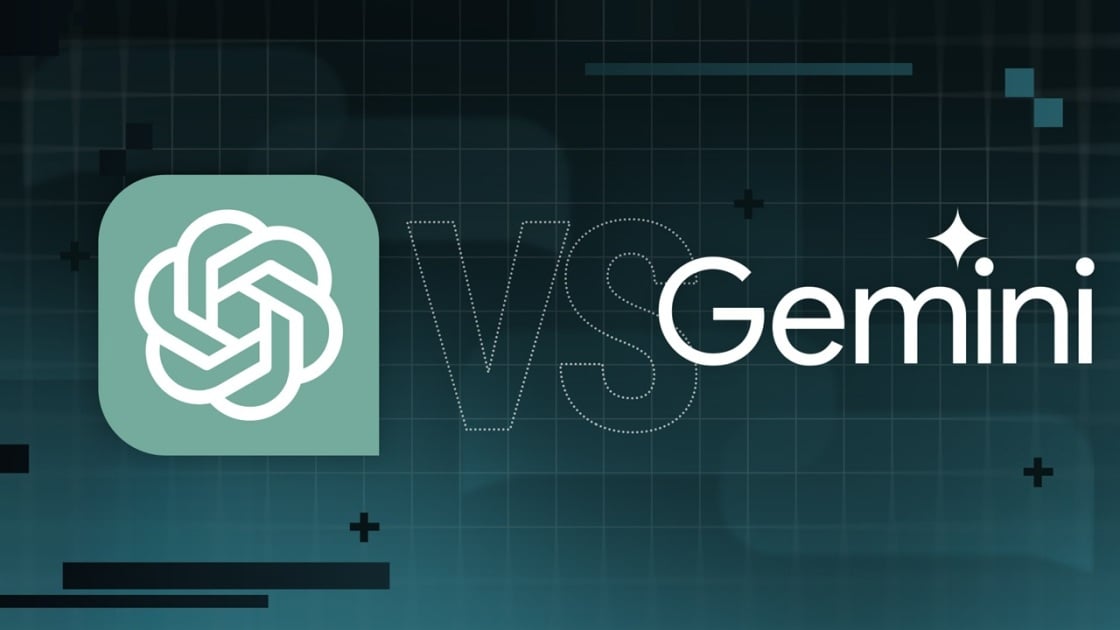
Precio
ChatGPT y Gemini tienen versiones gratuitas que limitan su acceso a características y modelos. Los planes premium para ambos también comienzan en alrededor de $ 20 por mes. Las características de chatbot, como investigaciones profundas, generación de imágenes y videos, búsqueda web y más, son similares en ChatGPT y Gemini. Sin embargo, los planes de Gemini pagados también incluyen el almacenamiento en la nube de Google Drive (a partir de 2TB) y un conjunto robusto de integraciones en las aplicaciones de Google Workspace.
Los niveles de más alta gama de ChatGPT y Gemini desbloquean el aumento de los límites de uso y algunas características únicas, pero el costo mensual prohibitivo de estos planes (como $ 200 para Chatgpt Pro o $ 250 para Gemini Ai Ultra) los pone fuera del alcance de la mayoría de las personas. Las características específicas del plan Pro de ChatGPT, como el modo O1 Pro que aprovecha el poder de cálculo adicional para preguntas particularmente complicadas, no son especialmente relevantes para el consumidor promedio, por lo que no sentirá que se está perdiendo. Sin embargo, es probable que desee las características que son exclusivas del plan Ai Ultra de Gemini, como la generación de videos VEO 3.
Ganador: Géminis
Plataformas
Puede acceder a ChatGPT y Gemini en la web o a través de aplicaciones móviles (Android e iOS). ChatGPT también tiene aplicaciones de escritorio (macOS y Windows) y una extensión oficial para Google Chrome. Gemini no tiene aplicaciones de escritorio dedicadas o una extensión de Chrome, aunque se integra directamente con el navegador.
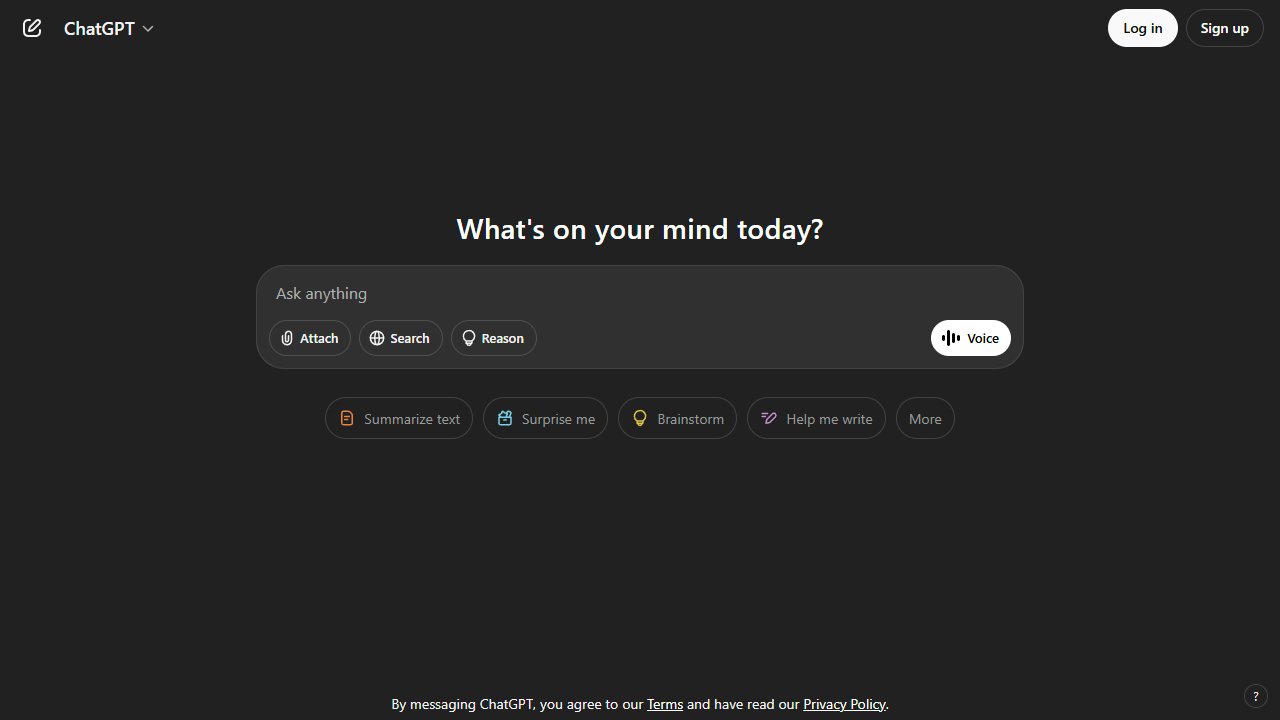
(Crédito: OpenAI/PCMAG)
Chatgpt está disponible en otros lugares, Como a través de Siri. Como se mencionó, puede acceder a Gemini en las aplicaciones de Google, como el calendario, Documento, ConducirGmail, Mapas, Mantener, FotosSábanas, y Música de YouTube. Tanto los modelos de Chatgpt como Gemini también aparecen en sitios como la perplejidad. Sin embargo, obtiene la mayor cantidad de funciones de estos chatbots en sus aplicaciones y portales web dedicados.
Las interfaces de ambos chatbots son en gran medida consistentes en todas las plataformas. Son fáciles de usar y no lo abruman con opciones y alternar. ChatGPT tiene algunas configuraciones más para jugar, como la capacidad de ajustar su personalidad, mientras que la profunda interfaz de investigación de Gemini hace un mejor uso de los bienes inmuebles de pantalla.
Ganador: empate
Modelos de IA
ChatGPT tiene dos series primarias de modelos, la serie 4 (su línea de conversación, insignia) y la Serie O (su compleja línea de razonamiento). Gemini ofrece de manera similar una serie Flash de uso general y una serie Pro para tareas más complicadas.
Los últimos modelos de Chatgpt son O3 y O4-Mini, y los últimos de Gemini son 2.5 Flash y 2.5 Pro. Fuera de la codificación o la resolución de una ecuación, pasará la mayor parte de su tiempo usando los modelos de la serie 4-Series y Flash. A continuación, puede ver cómo funcionan estos modelos en una variedad de tareas. Qué modelo es mejor depende realmente de lo que quieras hacer.
Ganador: empate
Búsqueda web
ChatGPT y Gemini pueden buscar información actualizada en la web con facilidad. Sin embargo, ChatGPT presenta mosaicos de artículos en la parte inferior de sus respuestas para una lectura adicional, tiene un excelente abastecimiento que facilita la vinculación de reclamos con evidencia, incluye imágenes en las respuestas cuando es relevante y, a menudo, proporciona más detalles en respuesta. Gemini no muestra nombres de fuente y títulos de artículos completos, e incluye mosaicos e imágenes de artículos solo cuando usa el modo AI de Google. El abastecimiento en este modo es aún menos robusto; Google relega las fuentes a los caretes que se pueden hacer clic que no resaltan las partes relevantes de su respuesta.
Como parte de sus experiencias de búsqueda en la web, ChatGPT y Gemini pueden ayudarlo a comprar. Si solicita consejos de compra, ambos presentan mosaicos haciendo clic en enlaces a los minoristas. Sin embargo, Gemini generalmente sugiere mejores productos y tiene una característica única en la que puede cargar una imagen tuya para probar digitalmente la ropa antes de comprar.
Ganador: chatgpt
Investigación profunda
ChatGPT y Gemini pueden generar informes que tienen docenas de páginas e incluyen más de 50 fuentes sobre cualquier tema. La mayor diferencia entre los dos se reduce al abastecimiento. Gemini a menudo cita más fuentes que CHATGPT, pero maneja el abastecimiento en informes de investigación profunda de la misma manera que lo hace en la búsqueda en modo AI, lo que significa caretas que se puede hacer clic sin destacados en el texto. Debido a que es más difícil conectar las afirmaciones en los informes de Géminis a fuentes reales, es más difícil creerles. El abastecimiento claro de ChatGPT con destacados en el texto es más fácil de confiar. Sin embargo, Gemini tiene algunas características de calidad de vida en ChatGPT, como la capacidad de exportar informes formateados correctamente a Google Docs con un solo clic. Su tono también es diferente. Los informes de ChatGPT se leen como publicaciones de foro elaboradas, mientras que los informes de Gemini se leen como documentos académicos.
Ganador: chatgpt
Generación de imágenes
La generación de imágenes de ChatGPT impresiona independientemente de lo que solicite, incluso las indicaciones complejas para paneles o diagramas cómicos. No es perfecto, pero los errores y la distorsión son mínimos. Gemini genera imágenes visualmente atractivas más rápido que ChatGPT, pero rutinariamente incluyen errores y distorsión notables. Con indicaciones complicadas, especialmente diagramas, Gemini produjo resultados sin sentido en las pruebas.
Arriba, puede ver cómo ChatGPT (primera diapositiva) y Géminis (segunda diapositiva) les fue con el siguiente mensaje: “Genere una imagen de un estudio de moda con una decoración simple y rústica que contrasta con el espacio más agradable. Incluya un sofá marrón y paredes de ladrillo”. La imagen de ChatGPT limita los problemas al detalle fino en las hojas de sus plantas y texto en su libro, mientras que la imagen de Gemini muestra problemas más notables en su tubo de cordón y lámpara.
Ganador: chatgpt
¡Obtenga nuestras mejores historias!
Toda la última tecnología, probada por nuestros expertos
Regístrese en el boletín de informes de laboratorio para recibir las últimas revisiones de productos de PCMAG, comprar asesoramiento e ideas.
Al hacer clic en Registrarme, confirma que tiene más de 16 años y acepta nuestros Términos de uso y Política de privacidad.
¡Gracias por registrarse!
Su suscripción ha sido confirmada. ¡Esté atento a su bandeja de entrada!
Generación de videos
La generación de videos de Gemini es la mejor de su clase, especialmente porque ChatGPT no puede igualar su capacidad para producir audio acompañante. Actualmente, Google bloquea el último modelo de generación de videos de Gemini, VEO 3, detrás del costoso plan AI Ultra, pero obtienes más videos realistas que con ChatGPT. Gemini también tiene otras características que ChatGPT no, como la herramienta Flow Filmmaker, que le permite extender los clips generados y el animador AI Whisk, que le permite animar imágenes fijas. Sin embargo, tenga en cuenta que incluso con VEO 3, aún necesita generar videos varias veces para obtener un gran resultado.
En el ejemplo anterior, solicité a ChatGPT y Gemini a mostrarme un solucionador de cubos de Rubik Rubik que resuelva un cubo. La persona en el video de Géminis se ve muy bien, y el audio acompañante es competente. Al final, hay una buena atención al detalle con el marco que se desplaza, simulando la detención de una grabación de selfies. Mientras tanto, Chatgpt luchó con su cubo, distorsionándolo en gran medida.
Ganador: Géminis
Procesamiento de archivos
Comprender los archivos es una fortaleza de ChatGPT y Gemini. Ya sea que desee que respondan preguntas sobre un manual, editen un currículum o le informen algo sobre una imagen, ninguno decepciona. Sin embargo, ChatGPT tiene la ventaja sobre Gemini, ya que ofrece un reconocimiento de imagen ligeramente mejor y respuestas más detalladas cuando pregunta sobre los archivos cargados. Ambos chatbots todavía a veces inventan citas de documentos proporcionados o malinterpretan las imágenes, así que asegúrese de verificar sus resultados.
Ganador: chatgpt
Escritura creativa
Chatgpt y Gemini pueden generar poemas, obras, historias y más competentes. CHATGPT, sin embargo, se destaca entre los dos debido a cuán únicas son sus respuestas y qué tan bien responde a las indicaciones. Las respuestas de Gemini pueden sentirse repetitivas si no calibra cuidadosamente sus solicitudes, y no siempre sigue todas las instrucciones a la carta.
En el ejemplo anterior, solicité ChatGPT (primera diapositiva) y Gemini (segunda diapositiva) con lo siguiente: “Sin hacer referencia a nada en su memoria o respuestas anteriores, quiero que me escriba un poema de verso gratuito. Preste atención especial a la capitalización, enjambment, ruptura de línea y puntuación. Dado que es un verso libre, no quiero un medidor familiar o un esquema de retiro de la rima, pero quiero que tenga un estilo de coohes. ChatGPT logró entregar lo que pedí en el aviso, y eso era distinto de las generaciones anteriores. Gemini tuvo problemas para generar un poema que incorporó cualquier cosa más allá de las comas y los períodos, y su poema anterior se lee de manera muy similar a un poema que generó antes.
Recomendado por nuestros editores
Ganador: chatgpt
Razonamiento complejo
Los modelos de razonamiento complejos de Chatgpt y Gemini pueden manejar preguntas de informática, matemáticas y física con facilidad, así como mostrar de manera competente su trabajo. En las pruebas, ChatGPT dio respuestas correctas un poco más a menudo que Gemini, pero su rendimiento es bastante similar. Ambos chatbots pueden y le darán respuestas incorrectas, por lo que verificar su trabajo aún es vital si está haciendo algo importante o tratando de aprender un concepto.
Ganador: chatgpt
Integración
ChatGPT no tiene integraciones significativas, mientras que las integraciones de Gemini son una característica definitoria. Ya sea que desee obtener ayuda para editar un ensayo en Google Docs, comparta una pestaña Chrome para hacer una pregunta, pruebe una nueva lista de reproducción de música de YouTube personalizada para su gusto o desbloquee ideas personales en Gmail, Gemini puede hacer todo y mucho más. Es difícil subestimar cuán integrales y poderosas son realmente las integraciones de Géminis.
Ganador: Géminis
Asistentes de IA
ChatGPT tiene GPT personalizados, y Gemini tiene gemas. Ambos son asistentes de IA personalizables. Tampoco es una gran actualización sobre hablar directamente con los chatbots, pero los GPT personalizados de terceros agregan una nueva funcionalidad, como el fácil acceso a Canva para editar imágenes generadas. Mientras tanto, terceros no pueden crear gemas, y no puedes compartirlas. Puede permitir que los GPT personalizados accedan a la información externa o tomen acciones externas, pero las GEM no tienen una funcionalidad similar.
Ganador: chatgpt
Contexto Windows y límites de uso
La ventana de contexto de ChatGPT sube a 128,000 tokens en sus planes de nivel superior, y todos los planes tienen límites de uso dinámicos basados en la carga del servidor. Géminis, por otro lado, tiene una ventana de contexto de 1,000,000 token. Google no está demasiado claro en los límites de uso exactos para Gemini, pero también son dinámicos dependiendo de la carga del servidor. Anecdóticamente, no pude alcanzar los límites de uso usando los planes pagados de Chatgpt o Gemini, pero es mucho más fácil hacerlo con los planes gratuitos.
Ganador: Géminis
Privacidad
La privacidad en Chatgpt y Gemini es una bolsa mixta. Ambos recopilan cantidades significativas de datos, incluidos todos sus chats, y usan esos datos para capacitar a sus modelos de IA de forma predeterminada. Sin embargo, ambos le dan la opción de apagar el entrenamiento. Google al menos no recopila y usa datos de Gemini para fines de capacitación en aplicaciones de espacio de trabajo, como Gmail, de forma predeterminada. ChatGPT y Gemini también prometen no vender sus datos o usarlos para la orientación de anuncios, pero Google y OpenAI tienen historias sórdidas cuando se trata de hacks, filtraciones y diversos fechorías digitales, por lo que recomiendo no compartir nada demasiado sensible.
Ganador: empate
Related posts




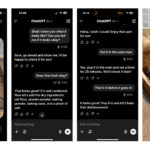

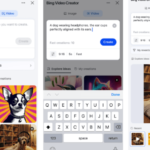




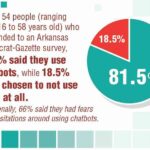






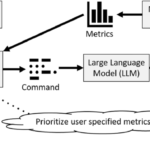




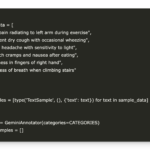


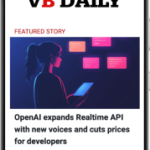


















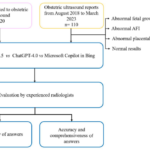





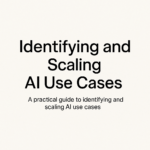






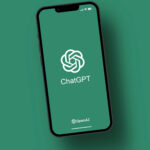








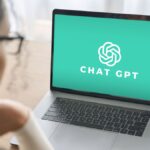




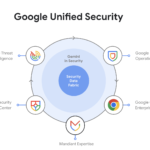




















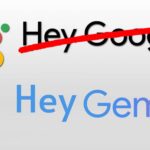


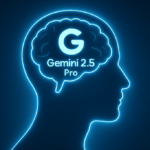




















































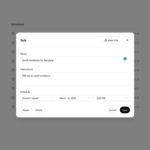








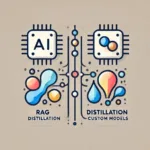




















































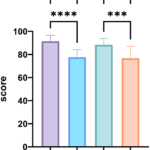


















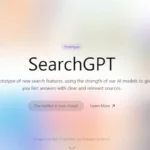






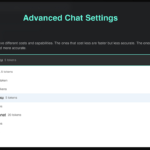






















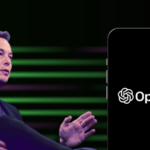






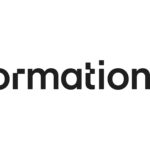








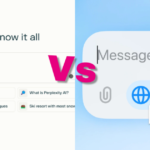




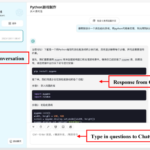











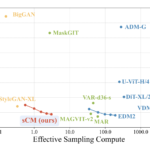






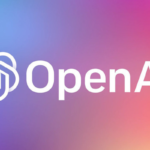









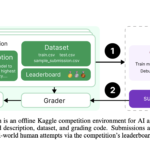
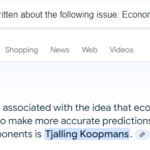




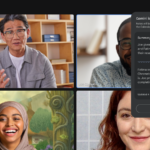




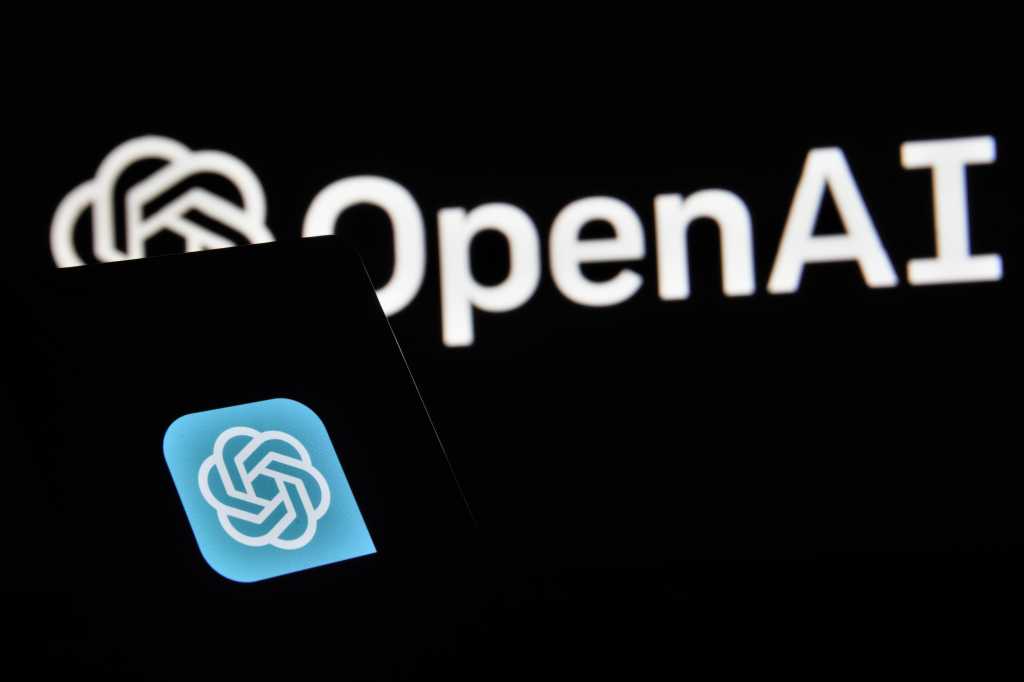






Trending
-

 Startups2 años ago
Startups2 años agoRemove.bg: La Revolución en la Edición de Imágenes que Debes Conocer
-

 Tutoriales2 años ago
Tutoriales2 años agoCómo Comenzar a Utilizar ChatGPT: Una Guía Completa para Principiantes
-

 Startups1 año ago
Startups1 año agoStartups de IA en EE.UU. que han recaudado más de $100M en 2024
-
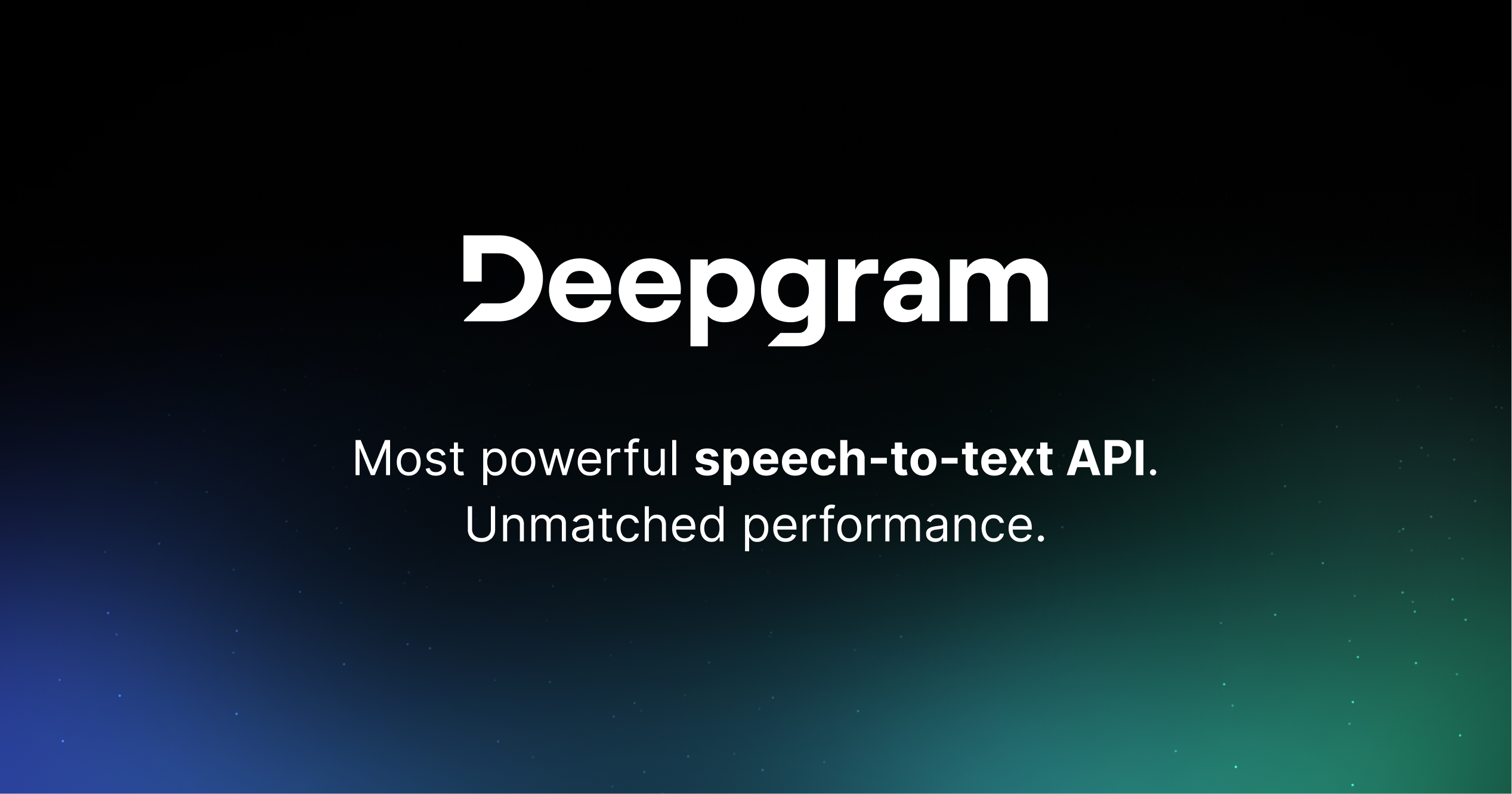
 Startups2 años ago
Startups2 años agoDeepgram: Revolucionando el Reconocimiento de Voz con IA
-

 Recursos2 años ago
Recursos2 años agoCómo Empezar con Popai.pro: Tu Espacio Personal de IA – Guía Completa, Instalación, Versiones y Precios
-
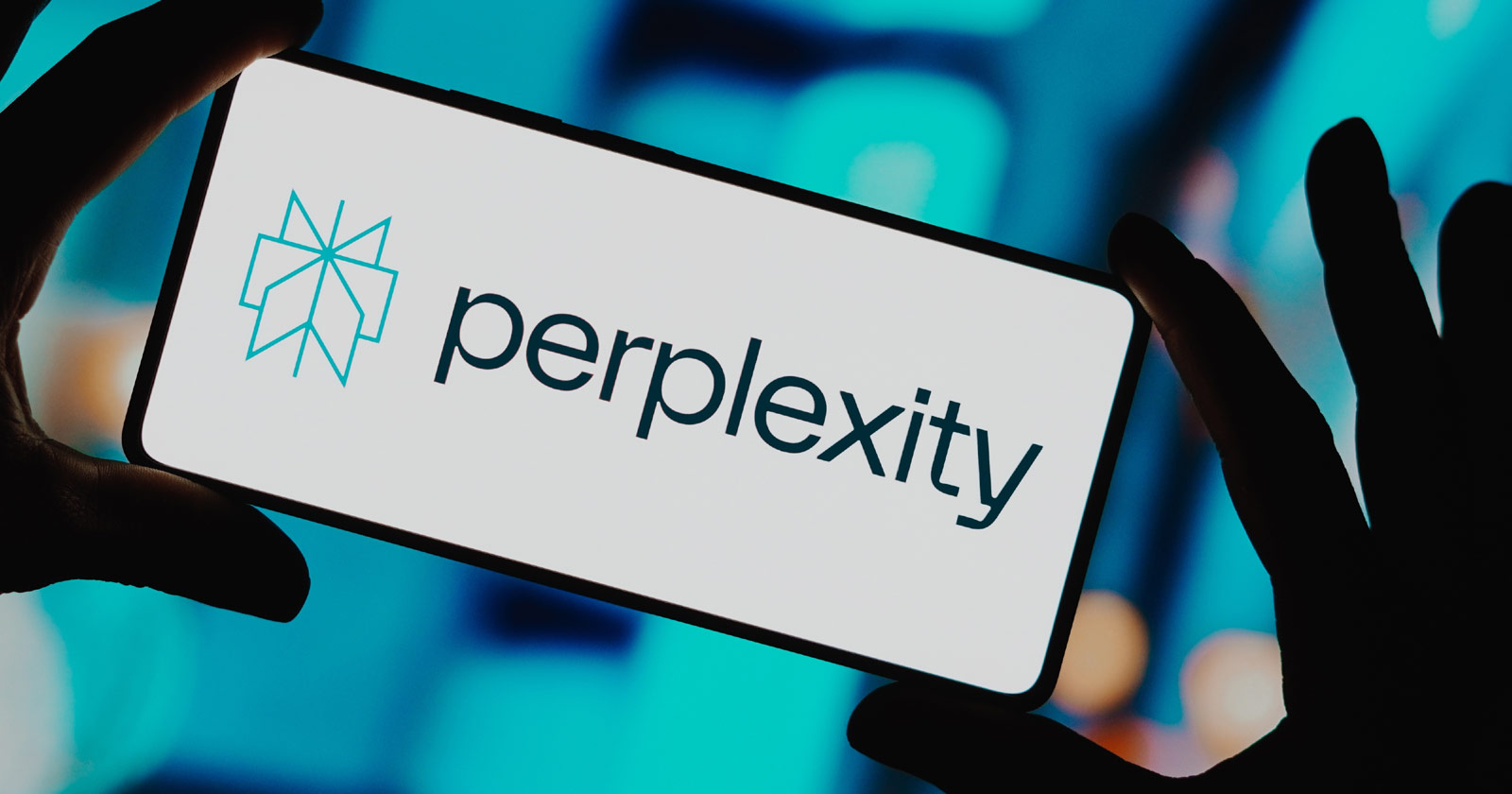
 Recursos2 años ago
Recursos2 años agoPerplexity aplicado al Marketing Digital y Estrategias SEO
-
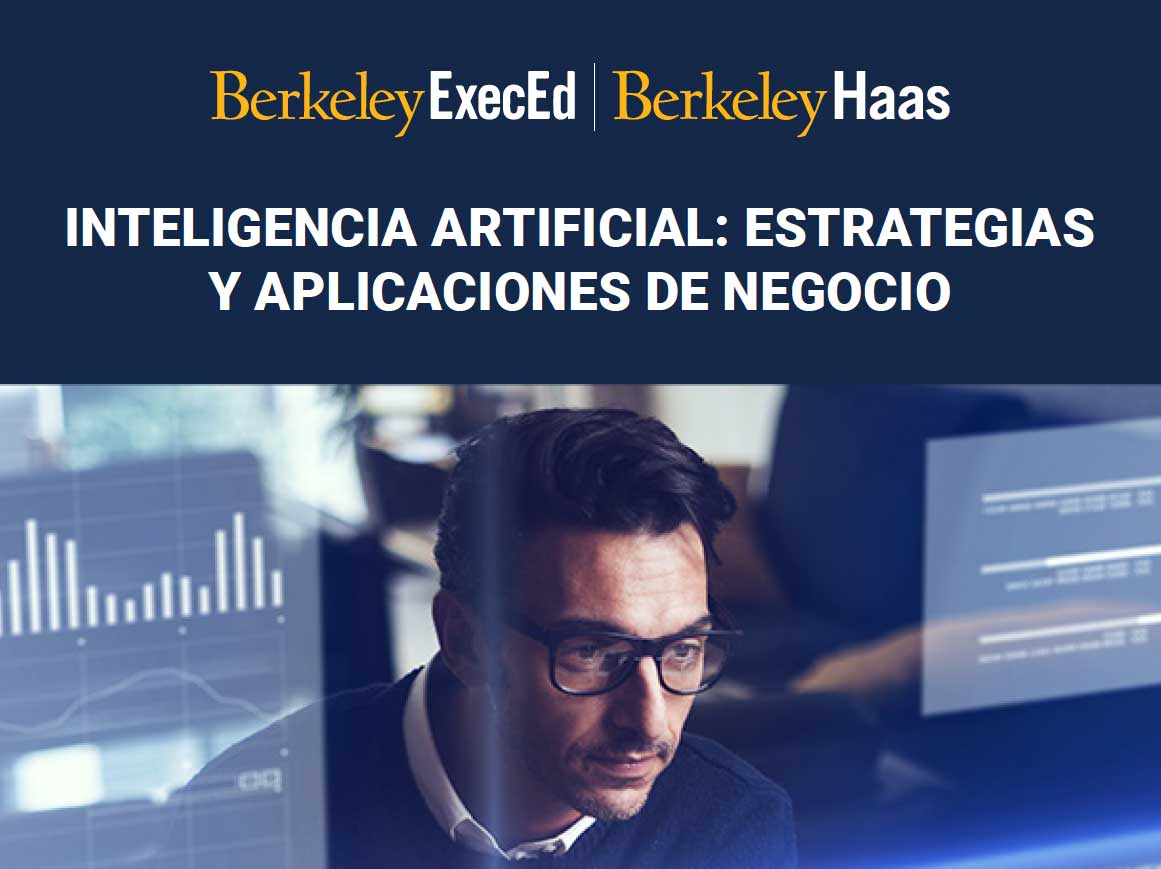
 Estudiar IA2 años ago
Estudiar IA2 años agoCurso de Inteligencia Artificial de UC Berkeley estratégico para negocios
-
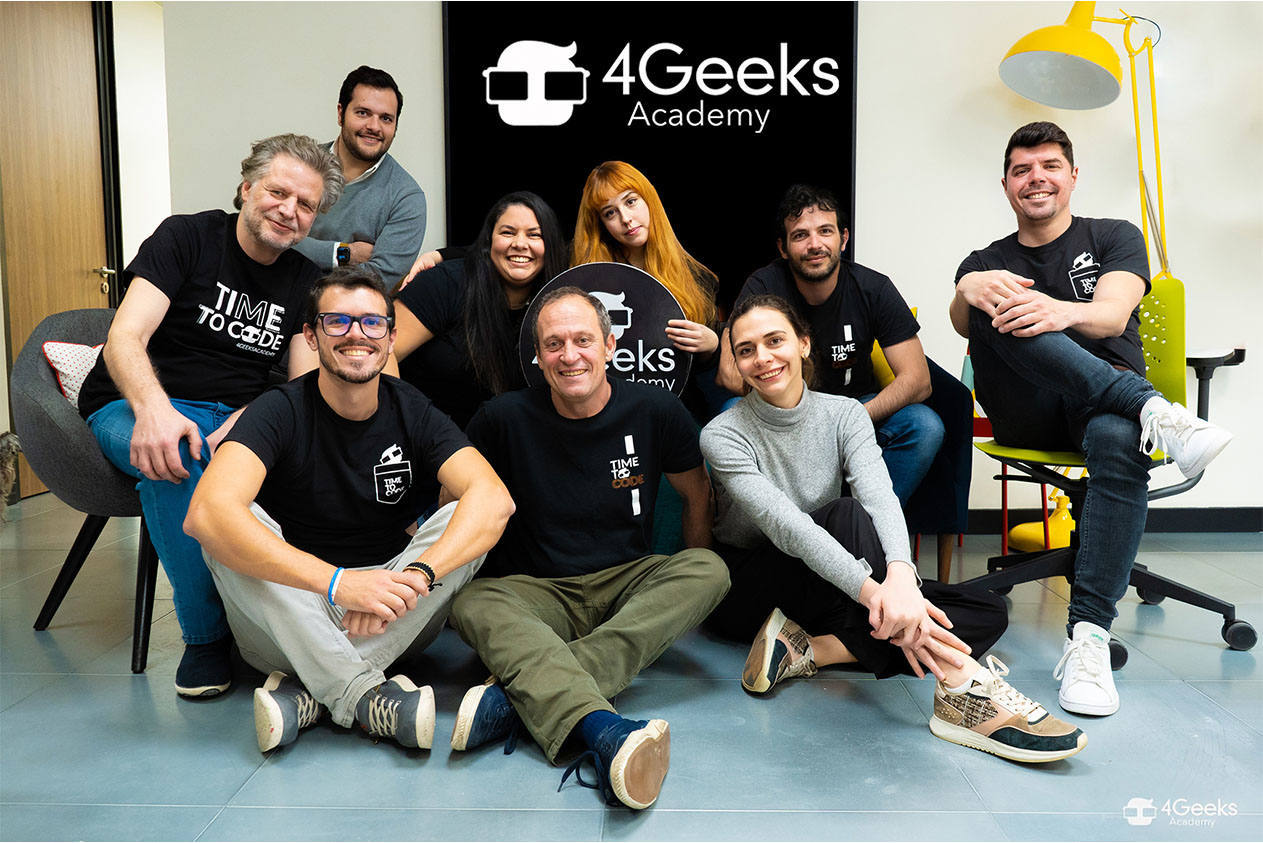
 Estudiar IA2 años ago
Estudiar IA2 años agoCurso de Inteligencia Artificial Aplicada de 4Geeks Academy 2024










